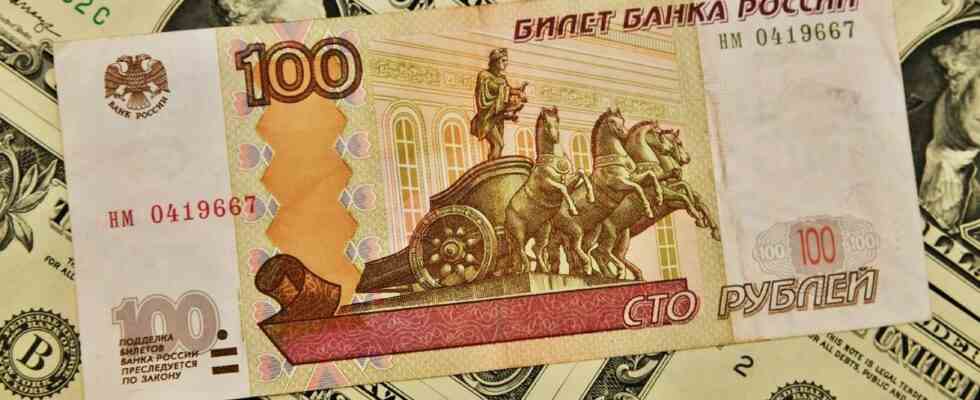The ruble is doing better, but the Russian state is likely to soon pay the economic sanctions taken against it after the invasion of Ukraine. After a historic collapse, the ruble has regained its colours, a success, fueled by the energy windfall, in the face of Western sanctions, but which does not reflect the real health of the economy.
At the end of February and the beginning of March, the ruble passed levels never seen before against the greenback: 100 rubles, then 120… up to more than 140 rubles per dollar reached on 7 March. But since that day, the Russian currency has continued to strengthen, and on Friday reached 71 rubles per dollar, a record since the fall of 2021, and 77 rubles / euro, its strongest level since June 2020. For the authorities, this is excellent news, the course of the ruble being an indicator closely scrutinized by the population, signaling that the sanctions are not chipping away at the Russian fortress.
The ruble boosted by oil and gas prices
According to Sofya Donets, chief economist for Russia at Renaissance Capital, the answer lies in an unprecedented trade surplus. “Imports to Russia have declined, while exports are solid, and with high hydrocarbon prices, this gives an estimated trade surplus of 20-25 billion dollars in March”, a record according to the economist. Oil and gas, Russia’s main exports, continue to flow, filling Russia’s coffers.
Robust exports are complemented by draconian capital controls introduced by the Central Bank. All exporting companies were forced to sell 80% of their export earnings to buy rubles. Individuals have been limited to 10,000 dollars purchased per month and one cannot leave the territory with more than this sum. With most international transfers blocked, and foreigners banned from selling their Russian assets, the financial market finds itself in a vacuum.
“It gives them space to focus on domestic issues,” according to a note from Renaissance capital, namely finding a balance between runaway inflation and the looming recession. The investment bank predicts a peak of 24% inflation in the summer, before a decline. In March, inflation soared to 16.7% year on year, according to data from the statistics agency Rosstat published on Friday, a level not seen since the beginning of 2015.
The financial rating lowered to “selective default”
“The course of the ruble has become a local instrument, there are no financial flows. The market is currently destroyed, and the price of a currency is a factor in international trade,” notes Sofya Donets.
The financial rating agency S & P Global Ratings on Saturday lowered Russia’s rating for its foreign currency payments to the level of “selective default”, after Moscow settled in rubles a debt in dollars. at the start of the week. There is only one notch lower: the note “D”, for default.
“We do not expect investors to be able to convert these ruble payments into dollars equivalent to the amounts originally owed, or the government to convert these payments within the 30-day grace period,” S&P said.
The agency believes that the sanctions against Russia are likely to be reinforced in the coming weeks “hindering Russia’s willingness and technical capacities to honor the terms and conditions of its obligations to foreign debtors”.
Russia settles its debts in rubles
For several weeks, Russia has averted the danger of a default, as the US Treasury has allowed the use of foreign currencies held by Moscow abroad to settle foreign debts. In March, Russia thus paid several tranches of interest, demonstrating its willingness and ability to repay.
But since Monday, the United States no longer allows Russia to repay its debt with dollars held in American banks. As a result, JPMorgan, which acted as correspondent bank, blocked a payment.
As a result, the Russian Finance Ministry announced on Wednesday that it had settled in rubles nearly $650 million due on April 4.

